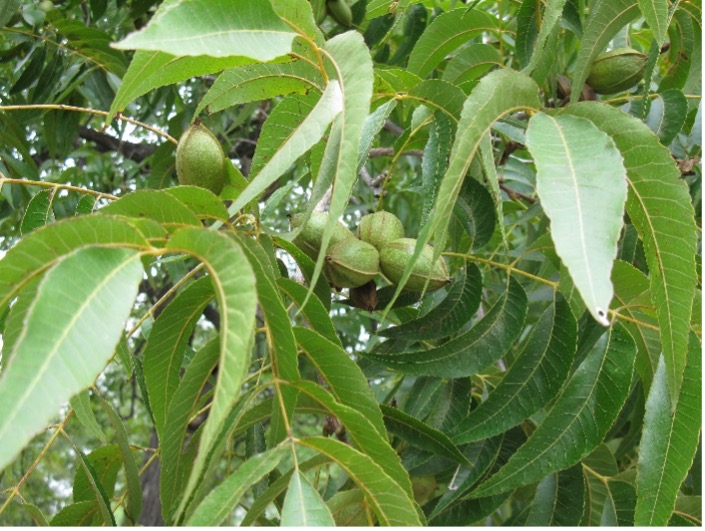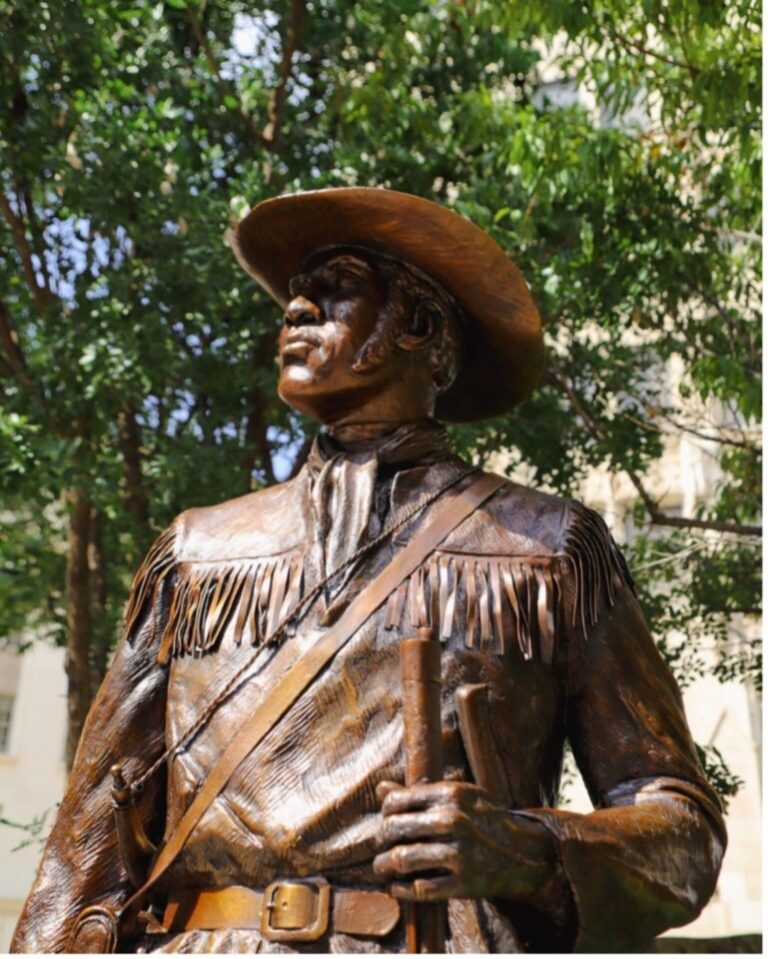Happy Arbor Day! Today is a day of observance where individuals are encouraged to plant trees and celebrate their many benefits. To celebrate, we’d like to introduce you to the many beautiful and beneficial trees of the San Antonio River. What trees grow along the river? There’s no need to be stumped! We reached out to Peter Pierson, the Natural Resource Management Specialist for the River Authority, to get the scoop on our local trees.
Peter Pierson, Natural Resource Management Specialist
Can you be-leaf it? There are over 35 different varieties of woody plants along the Mission Reach of the San Antonio River Walk! These plants are perennial (living through many growing seasons) and classified as anywhere from a large canopy tree to a small ornamental tree/large shrub and are native or nonnative. All the plant material that the River Authority plants are native species that may be naturally found in riparian areas. The plant material that finds its way onto the project tends to be a mix of native and nonnative species that find the conditions to their liking. The River Authority allows the native varieties appropriate to the site to remain and develop as part of the ecosystem.
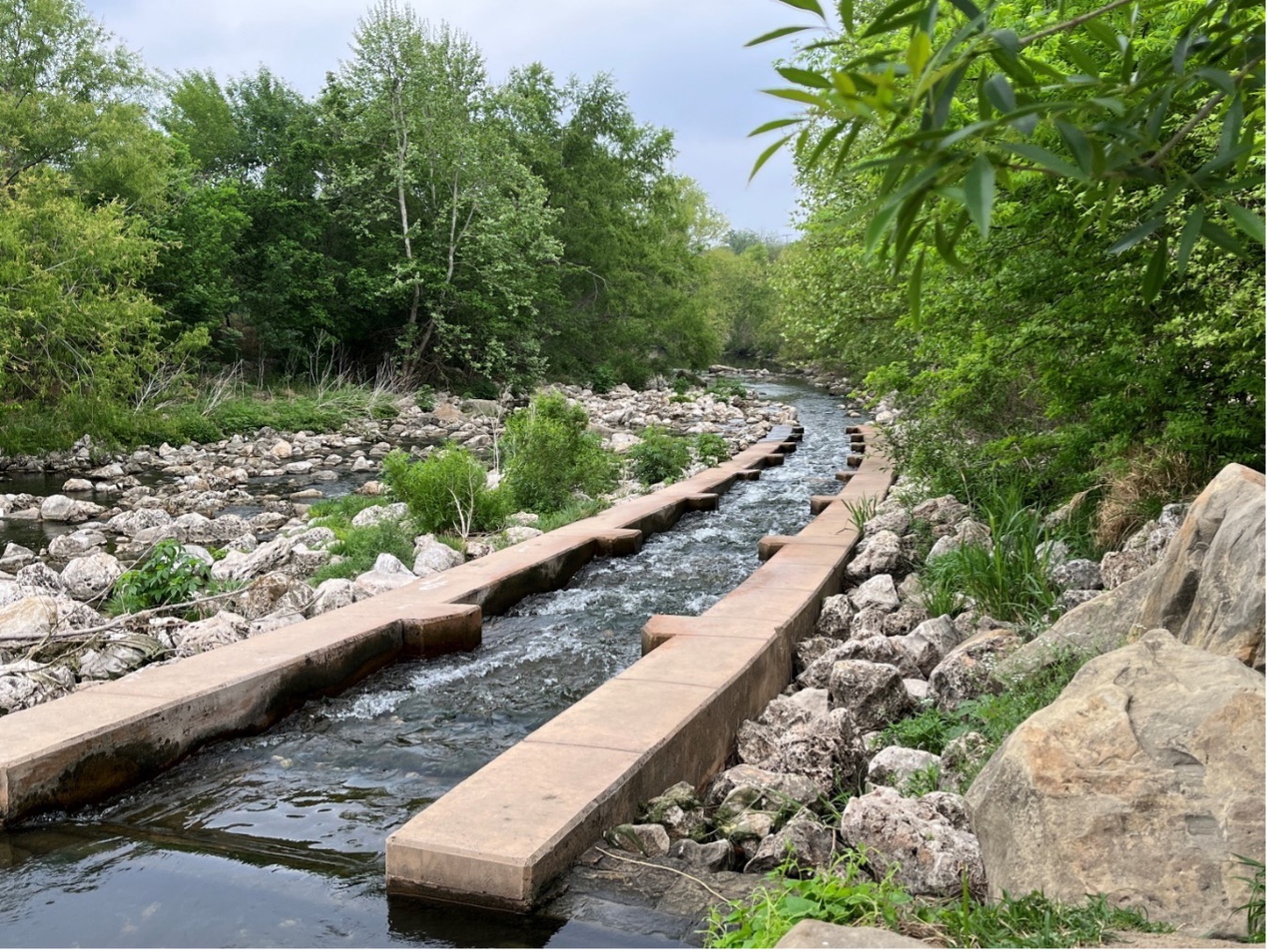
Trees grow along the Mission Reach of the San Antonio River near Confluence Park.
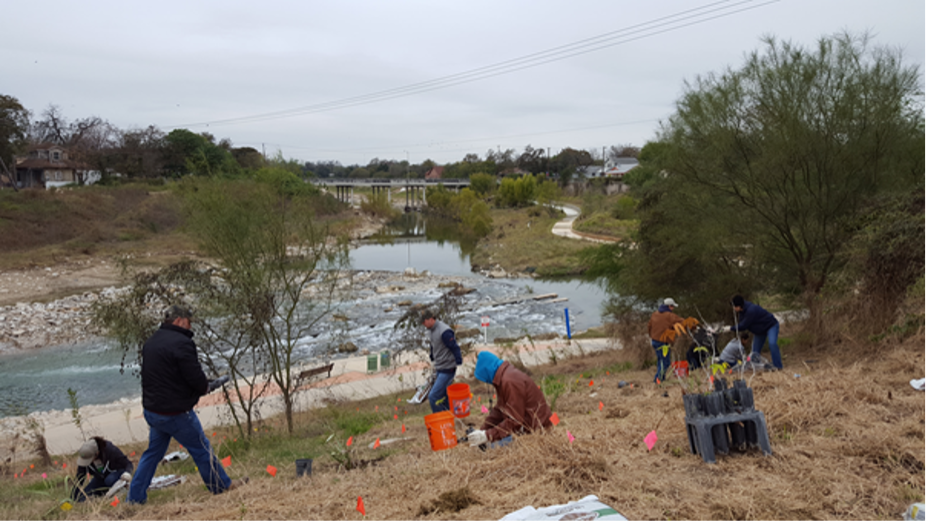
Peter Pierson and volunteers plant some of the ~ 23,000 tree seedlings along the Mission Reach as part of the ecosystem restoration. These seedlings were grown for the River Authority by the Texas Forestry Service from seeds harvested around San Antonio to ensure they would be well adapted to our environment.
What kinds of native trees grow along the San Antonio River?
Several tree species in the San Antonio River Basin thrive in riparian environments, including some that do well only in these environments. This group includes Boxelder, Pecan, Buttonbush, Black Walnut, Osage Orange, Red Mulberry, American Sycamore, Cottonwood, Escarpment Live Oak, Black Willow, Bald Cypress, American Elm, Cedar Elm, and Huisache.

From left to right: Huisache/Sweet Acacia (Vachellia farnesiana), Pecan (Carya illinoinensis), and Texas cedar elm (Ulmus crassifolia)
For additional information on Texas riparian plants and a list of Central Texas Riparian Restoration Species, head to the Lady Bird Johnson Wildflower Center‘s website.
Different trees favor different environments and conditions. At the River Authority, we attempt to match any new trees being planted to the environments and conditions they would naturally be found in. At the edge of the river, we often find Black Willow and Bald Cypress, which produce root systems that help stabilize the banks along the river. Their canopies also help cool the water, creating a favorable environment for aquatic lifeforms. Trees are always throwing shade! Bald Cypress trees grow best when their roots can extend into the water.
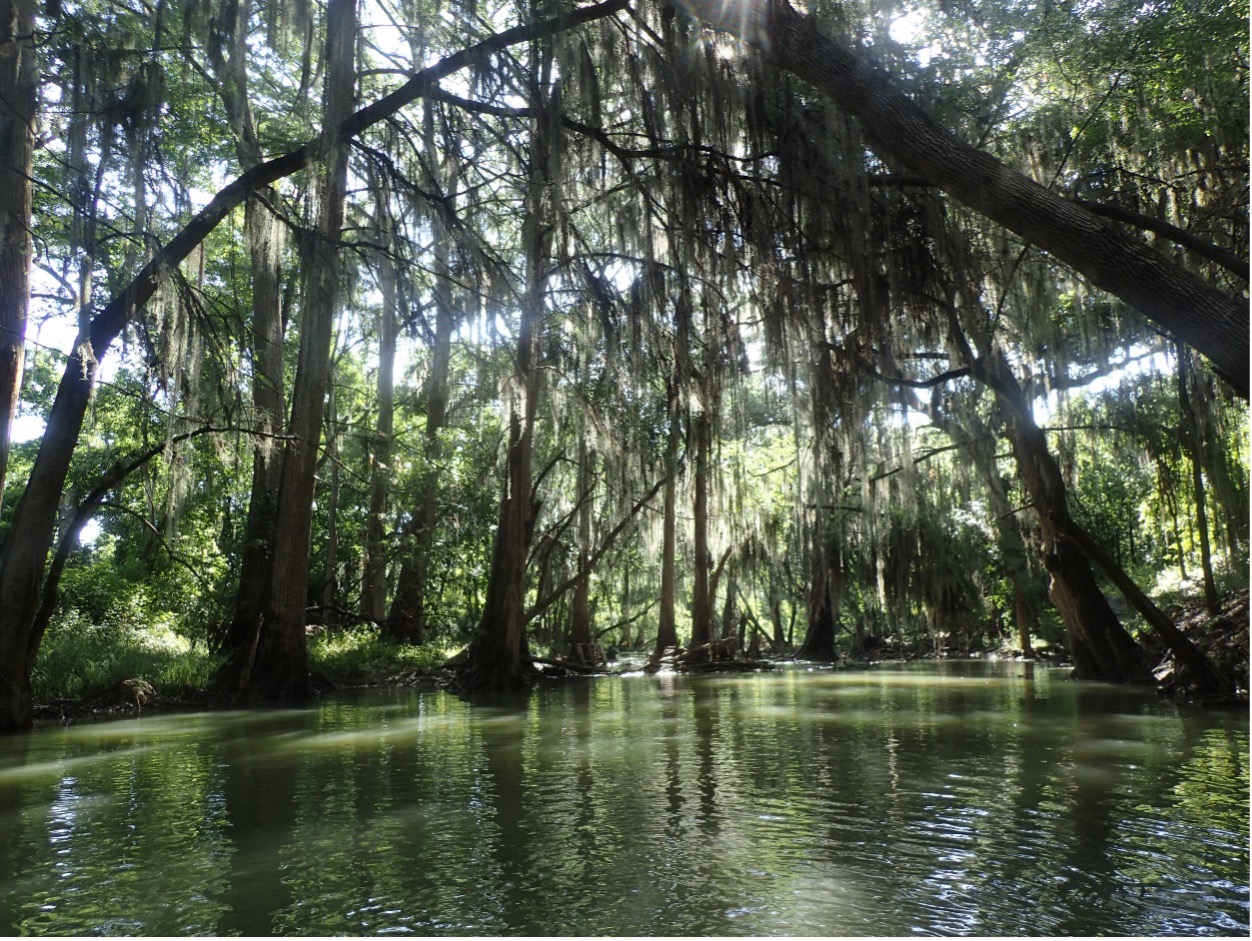
Bald Cypress (Taxodium distichum) trees grow along the San Antonio River.
Sycamores and Cottonwoods grow where their roots can reach into the water table below them. They are occasionally subjected to temporary flooding in the bottomlands along streams and rivers. Escarpment Live Oaks and Cedar Elms are very adaptable to a wide variety of conditions. They are usually found in drier conditions further up from the banks of the river.
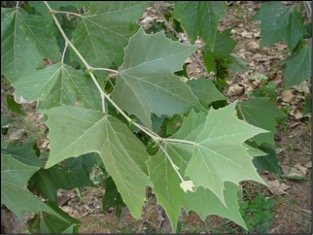
Leaves of the American Sycamore (Platanus occidentalis)
What about nonnative trees?
The River Authority implements techniques to control and reduce populations of nonnative species. Without management, they would compete with and potentially reduce desirable native plant l populations that provide food resources and habitat for our native wildlife species. Troubling nonnative species that have been found along the river include Tree of Heaven, Paper Mulberry, Lead tree, Ligustrum, Chinaberry, White Mulberry, Saltcedar, Chinese Tallow, and Chastetree (also referred to as Vitex). Of this group, Chinaberry, Chinese Tallow, and Saltcedar are on the Texas Department of Agriculture’s (TDA) Noxious and Invasive Plants List. According to the TDA, in Texas, a noxious or invasive plant is defined as: “Any species that has a serious potential to cause economic or ecological harm to the agriculture, horticulture, native plants, ecology and waterways of Texas.” Trees on this list are prohibited from being sold, distributed, or imported into the state of Texas.
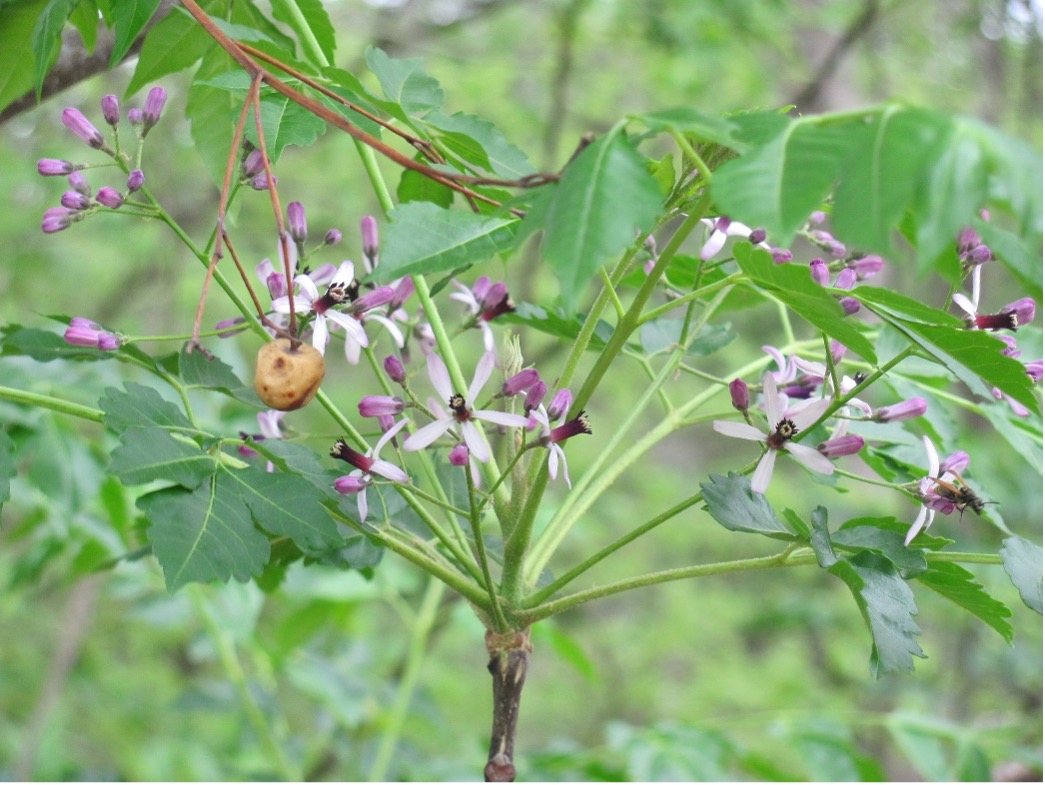
Chinaberry (Melia azedarach) is a fast-growing tree that forms dense thickets, crowding out native vegetation.
Want to celebrate Arbor Day? – Plant a tree!
When choosing a native tree to plant, consider your available space and your chosen tree’s mature size. For example, planting a tree that will grow a 60-foot canopy in a small space will eventually lead to conflicts with building structures or other trees. Did you know that the root system of a tree often extends two to three times the width of the canopy of a tree? When limited to a small space, a tree cannot grow as it would naturally. This results in a less healthy specimen that requires more care to maintain. The right tree in the right space will be a healthy and virtually carefree investment that will enhance the site for many years to come. So, the next time you plant a native tree, give yourself a high-five! Your actions are vital in helping keep your local creeks and the San Antonio River safe, clean, and enjoyable for generations to come.

